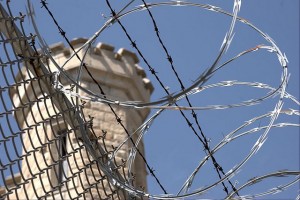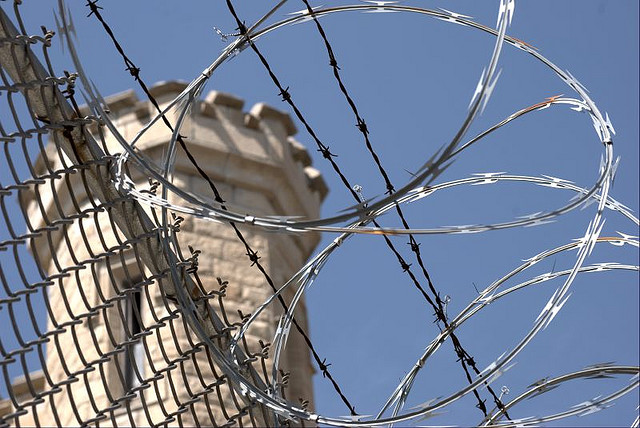CHICAGO -- Every morning in southern Illinois, 38 full-time prison guards board a state bus and ride 46 miles to the Illinois Youth Center and correctional facility at Murphysboro. The facility was built in 1997 with a capacity for 156 young people.
But when the guards arrive for work every day, no inmates are waiting for them.
Concurrent with a steady decline in youth incarceration, Murphysboro hasn’t seen an inmate in months. But a heavily disputed proposal by Illinois Gov. Pat Quinn to close Murphysboro and the under-populated juvenile facility at Joliet, consolidating their inmates with those in other facilities across the state, is nearing its final stages.
“Illinois is in the middle of a fiscal crisis, and we’re finding ourselves having to cut programs all over the

The fence outside the Joliet facility. Photo courtesy of suzphotofun on Flickr.
board,” said Illinois assistant budget director Abdon Pallasch. “And now that our juvenile inmate population is only 943, as opposed to almost 1,700 in 1990, we just don’t need these facilities anymore.”
Pallasch credits the declining inmate population to a new focus on “smaller, community-based” programs rather than centralized prison facilities. Alternative rehabilitation methods like Redeploy Illinois have led to a 50 percent reduction in reoffending among incarcerated youth since 2005, according to the Illinois Department of Human Services.
“When we look at the outcomes from juvenile prisons, we see that the recidivism rate is higher than for kids who go through Redeploy, which focuses more on community intervention,” said Nora Collins-Mandeville, director of policy and communications at the Evanston-based Juvenile Justice Initiative. “So we definitely think the prison closures are a step in the right direction — it shows us the state has been committed to investing in alternatives.”
Quinn’s plan, however, still faces strong opposition from labor unions and Alexander County legislators. Union officials like AFSCME spokesman Anders Lindall decry prison closings, arguing that such measures will lead to overcrowding and safety concerns at remaining correctional facilities.
“[The governor] uses the euphemism of ‘consolidation,’ but what they’re really talking about is cutting valuable services,” Lindall said. “Murphysboro is an exceptional facility that offers services unavailable at other centers, and we can’t afford to lose it.”

An overhead view of the Murphysboro facility. Photo courtesy of walkinginplace.org
But Murphysboro’s militaristic management style, considered a classic example for youth incarceration across the country, has long faced criticism as an outdated and overly-austere model. A June 2003 federal Department of Justice study, “found no significant differences in recidivism rates between boot camp participants and comparison groups,” continuing: “In some cases, boot camp graduates had higher rates of recidivism.”
In response to concerns that the closures will lead to overcrowding, Pallasch said the youth detention center in St. Charles, Ill. is being renovated to accept the remaining youth at Joliet, a facility designed for 399 inmates that currently houses 149 youth.
In order to push through his proposal, Quinn vetoed a 2011 initiative from the Illinois National Assembly, which in response to union pressure voted to re-fund the prisons in part by siphoning $56 million from the Illinois Department of Children and Family Services.
The Illinois General Assembly approved the governor’s decision last week. For Pallasch, that sum of money has many better uses than sustaining two nearly-empty youth prisons.
“Closing these facilities will save us $88 million per year we won’t have to cut from university scholarships, pre-kindergarten programs or health services,” he said. “Every state program is feeling the squeeze right now, and it’s important we have our priorities in line.”
